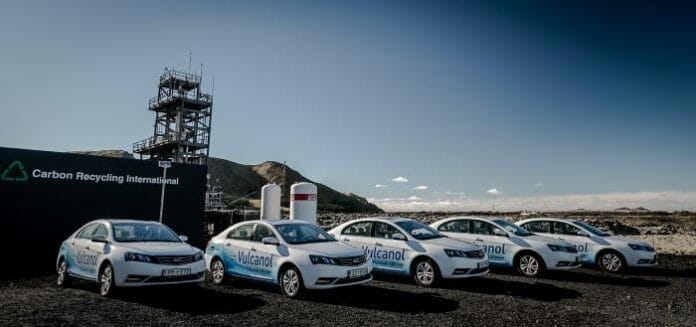On March 23, 2022, China’s top economic planner National Development and Reform Commission (NDRC) announced the “Hydrogen Energy Industry Development Plan 2021-2035” (hereinafter referred to as the “Plan”), which is the implementation of the country’s 14th Five-Year Plan on the development of the hydrogen energy industry. The significance of the Plan lies in the formal establishment of the strategic position in developing the country’s hydrogen energy industry. It should be pointed out that ANBOUND has in fact put forward a strategic proposal for China to build a “hydrogen energy society” more than two years ago.
China’s public policy formation process can be roughly divided into four stages. The first stage is policy formation. This is the top-level design part of the policy, and it is a key deliberation process in China’s policy system. As a major constituent of policy formation, this is the starting point of all policies of the country. The purpose of this is to construct policy ideas and clarify the directions. The second stage is policy preparation. This is a process by which internal government agencies prepare policy documents based on the results of the first stage, and it is also a phase that integrates different aspects together. It is then followed by policy decisions. This stage is the one in which the leadership within the Chinese government conducts discussions and consultations on policies. Finally, the last stage is policy implementation. This is both the implementation and the promotion stage of the policy.
Since the strategic proposal of “hydrogen energy society” was put forward by ANBOUND, we have been continuously advocating and promoting this concept, with the hope that in the initial stage of China’s policy formation, such a proposal can influence the decision-making process with rational and forward-looking ideas. With the Plan finally being released, ANBOUND is pleased to see the strategic position of developing the hydrogen energy industry is now clearly defined in the country’s national plan.
The importance of developing the hydrogen energy industry in China is clearly stated in the strategic positioning of the Plan. It is mainly shown in three aspects: (1) As hydrogen energy is an important part of the future energy system of the country, China now paying emphasis on its large-scale and efficient utilization as renewable energy, especially considering the long-term storage aspect. It also promotes the integration of hydrogen energy, electric energy, and thermal energy systems, leading to the formation of a modern energy supply system with multiple complementary integrations. (2) The Chinese authorities understand that hydrogen energy is an important carrier to achieving green and low-carbon transformation. Hence, China is now strengthening the supply of green hydrogen energy, thereby creating various forms of hydrogen energy consumption ecology and improving the energy security level. The objective of this is also to promote the transformation of energy consumption in the terminal usage such as transportation and industry, so as to ensure the green development of industries with high energy consumption and high emissions. (3) It is clear that the hydrogen energy industry is a strategically emerging industry and a key development direction. China, therefore, is strengthening the construction of the hydrogen energy industry innovation system, accelerating the breakthrough of the bottleneck in core technologies and key materials, as well as improving the upgrade and growth of the industry. In addition, it is expected that there will also be an acceleration in the research of new related products, formats, and models, in the effort to build a green and low-carbon industrial system.
The Plan proposes a three-phase development goal for the hydrogen energy industry: (1) By 2025, a relatively complete hydrogen energy industry development system and policy environment will be formed. Under this phase, industrial innovation capabilities will be significantly improved, where China can fundamentally master the core technologies and manufacturing processes. This is also the period to initially establish a relatively complete supply chain and industrial system to produce clean energy, and make progress in storage and transportation technology. On top of that, a hydrogen energy supply system based on industrial by-products and renewable energy production will also be established. The number of fuel cell vehicles will reach approximately 50,000, with numerous refueling stations built. Hydrogen production as renewable energy is expected to reach 100,000-200,000 tons/year, and carbon dioxide emission will be reduced to 1,000,000 – 2,000,000 tons/year. (2) By 2030, a relatively complete hydrogen energy industry technology innovation system will be formed, and China will be able to achieve its carbon emission goal. (3) By 2035, a hydrogen energy industry system will be set up, covering diversified fields that include transportation, energy storage, industry, and others. The proportion of hydrogen renewable energy production in terminal consumption will increase significantly, contributing tremendously to supporting the development of China’s green energy transformation.
China in fact already has a certain foundation in the development of the hydrogen energy industry. It is the largest hydrogen producer in the world, with an annual hydrogen production output of about 33 million tons, of which about 12 million tons meet the industrial quality standard, ranking first place in the world’s renewable energy installed capacity. Main technologies and production processes such as hydrogen energy preparation, storage, and transportation, hydrogenation, fuel cells, system integration, etc., have already been grasped in China. There are even small-scale demonstration applications of fuel cell vehicles in some regions. In addition, there are more than 300 industrial enterprises above the designated size in the entire industry chain, concentrated in the Yangtze River Delta, Guangdong-Hong Kong-Macao Greater Bay Area, Beijing-Tianjin-Hebei, and other regions.
It should be pointed out that in the strategic concept of building a “hydrogen energy society”, the areas involved and the development goals to be achieved actually exceed the core of the hydrogen energy industry focused in the Plan. ANBOUND in any case is the initiator and advocator of the construction of China’s “hydrogen energy society”. In our opinion, this refers to the state in which hydrogen energy has become an important energy basis for economic and social development. The establishment of a hydrogen energy society will enhance the country’s energy security, promote multiple core technologies and industrial systems related to its utilization, and build a related energy consumption system. Crucially, this will provide the possibility for China to reduce carbon emissions and truly achieve green development. As things stand, the development of the hydrogen energy industry is an indispensable part of the development of the hydrogen energy society, but not the whole of it. Only when the production, application, and consumption of hydrogen energy become an important foundation and part of the entire social and economic system can China build a more diverse and safer energy system. With this, it will be able to realize its target of constructing a socioeconomic development model that is innovative, low-carbon, and energy-competitive.
Written by Jun Partner, Director of China Macro-Economic Research Team and Senior Researcher. His research field covers China’s macro-economy, the energy industry, and public policy.









